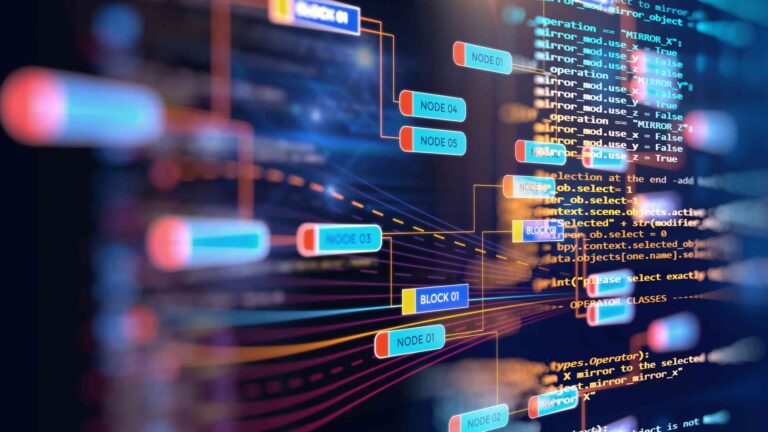The Five Best AI Solutions to eCommerce Fraud for Merchants

As fraudsters continue to develop sophisticated tactics, businesses must find innovative solutions to protect themselves and their customers. Enter Artificial Intelligence (AI) – a powerful tool that is transforming the way merchants detect and prevent fraud. In this article, we will explore the top five ways AI is being utilized to combat eCommerce fraud, delving into the methods, advantages, and disadvantages of each approach.
1: Machine Learning Algorithms
Machine learning algorithms (ML/MLA) are a type of AI that allows computers to learn and improve from experience without being explicitly programmed. These algorithms collect and analyze historical data on transactions to identify patterns and anomalies in data. They constantly observe, model, and revise these patterns in an attempt to predict the next fraud attack.
Machine learning advantages:
- Detects and prevents fraud in real-time, all the time
- Continuously improves and adapts to new fraud patterns
- Reduces false positives for less transaction friction
Disadvantages:
- Requires a large amount of data for optimal performance
- May have difficulty detecting new or rare types of fraud
2: Natural Language Processing
Natural Language Processing (NLP) is an AI technology that helps prevent eCommerce fraud by analyzing text-based communication between customers and merchants, such as emails, chats, and reviews. By identifying patterns and anomalies in language usage, NLP can detect suspicious communication, potentially flagging fraudulent activities.
For example, Amazon uses NLP to analyze customer reviews and detect fake or malicious reviews that could mislead buyers. Similarly, eBay employs NLP to monitor communication between buyers and sellers, identifying potential scams or fraudulent behavior. By leveraging NLP, these retailers can maintain a secure and trustworthy shopping environment for their customers while minimizing the impact of fraud on their businesses.
NLP advantages:
- Detects fraud based on language patterns and communication
- Prevents first-party fraud by observing and recording customer engagement
- Improves customer support by identifying potential issues and trends
Disadvantages:
- May generate false positives due to language nuances like slang and sarcasm
- Requires continuous updates to adapt to new fraud tactics
3: Biometric Authentication
Biometric authentication is a security process that uses unique biological characteristics (fingerprints, facial recognition) to verify a user’s identity. Traditional authentication methods like passwords and security questions are proving to be less effective in preventing fraud and account takeovers. Biometrics offer not only a higher level of security, their use is quick and convenient for consumers.
Biometrics are more widely adopted, and better suited, on digital wallet platforms than they are for retail and gateway applications. Apple, for instance, has integrated its Face ID and Touch ID technologies into Apple Pay, allowing users to authenticate transactions securely using their facial features or fingerprints. Similarly, Alibaba’s “Smile to Pay” system uses facial recognition technology to authenticate payments within its Alipay platform.
Biometrics’ advantages:
- Provide a higher level of security compared to traditional authentication methods
- Reduce the risk of account takeover fraud
- Enhance user experience by offering a seamless authentication process
Disadvantages:
- May raise privacy concerns among users
- Require specialized hardware and software
4: Real-time Fraud Scoring
Real-time fraud scoring analyzes transactions and customer behavior to identify and prevent fraudulent activities. Transactions are scored on how well they match certain patterns of fraudulent activity; once a set threshold is crossed in that evaluation, the transaction can be declined or submitted to a manual review.
Fraud Scoring is a fascinating intersection between human and artificial intelligence; it’s a microcosm of the wider debate about the limitations of AI and where human intuition must pick up. Here’s a rabbit hole you can go down on this topic.
Fraud Scoring Advantages:
- Detects and prevent fraud in pre-authorization
- Reduce the impact of fraud on businesses and customers
- Enhance the overall customer experience by minimizing disputes and transaction friction
Disadvantages:
- May generate false positives, blocking legitimate transactions
- Requires continuous updates to adapt to new fraud tactics
- Requires manual review
5: Social Network Analysis
Social network analysis (SNA) examines relationships and connections between individuals or entities to identify potential fraud. Data is gathered from eCommerce platforms, payment systems, and social media. This data includes information about users, their relationships, and interactions. Graphic patterns emerge using algorithms to identify unusual activity, anomalies, or suspicious network clusters that may indicate fraudulent behavior.
SNA Advantages:
- Detects affiliate fraud by identifying suspicious connections and networks
- Uncovers complex fraud schemes that may be difficult to detect using traditional methods
Disadvantages:
- May generate false positives due to complex relationships
- Requires continuous updates to adapt to new fraud tactics
- Can be highly intrusive, raises privacy concerns
AI is a scary-powerful tool that is now widely adopted and well-adapted to fight fraud for merchants. But as effective as AI may be, it’s not a stand-alone solution to fraud. AI is predominantly geared to stopping fraud pre-authorization. When fraud gets through the wire, and it will always find a way, you also need a post-auth strategy for truly comprehensive fraud and dispute management.







